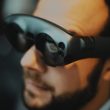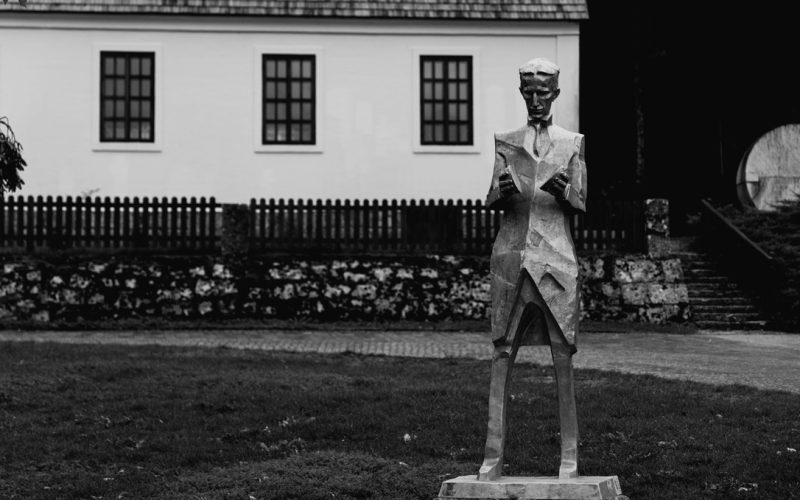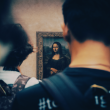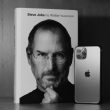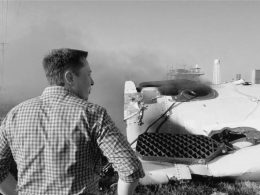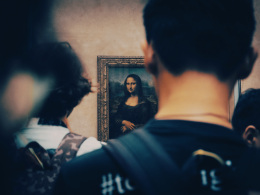Table of Contents Show
I. The Roots of a Genius: Early Life in Smiljan
Nikola Tesla was born on July 10, 1856, in the small village of Smiljan, located in what is now Croatia, then part of the Austro-Hungarian Empire. His birthplace, a remote and rugged region, was far from the centers of scientific learning that would later define his life. Yet, it was in these humble surroundings that the seeds of Tesla’s genius were planted. He was the fourth of five children, born to a Serbian Orthodox priest, Milutin Tesla, and his wife, Georgina Đuka Tesla, a woman of remarkable intelligence who, though uneducated in the formal sense, had a profound impact on young Nikola. It was from her that Tesla inherited his photographic memory and his extraordinary capacity for invention.
Tesla’s early life was shaped by the dual influences of his father’s religious devotion and his mother’s inventive spirit. Milutin Tesla, a man of strict principles, expected Nikola to follow in his footsteps and enter the priesthood. However, it was clear from a young age that Nikola was destined for a different path. He showed an early fascination with the natural world, displaying a curiosity that knew no bounds. As a child, he experimented with small inventions, tinkering with devices and concepts that would foreshadow his later work.
In 1870, Tesla was sent to the Higher Real Gymnasium in Karlovac, where he first encountered the wonders of mathematics and physics. It was here that Tesla became captivated by the mysteries of electricity, a force that, at the time, was still poorly understood. His education was rigorous, and Tesla excelled, demonstrating an ability to solve complex problems in his head, without the need for pen and paper—a skill that would become legendary in later years.
Despite his academic success, Tesla’s path was not without obstacles. The expectations of his family weighed heavily on him, and the pressure to conform to a conventional career path led to a period of intense personal conflict. In 1875, Tesla enrolled at the Austrian Polytechnic in Graz, where he immersed himself in his studies, often working from 3 a.m. to 11 p.m. But the strain of his relentless pursuit of knowledge took its toll, and by the end of his second year, Tesla had suffered a nervous breakdown. His education was cut short, and he left the university without a degree, a failure that would haunt him for years.
Yet, this setback did not deter Tesla. Instead, it marked the beginning of a period of wandering and self-discovery, during which he would refine the ideas that would later revolutionize the world. Tesla’s early years were marked by a relentless drive to understand the forces of nature, a quest that would take him from the rural backwaters of Croatia to the heart of the world’s most advanced scientific communities.
II. The Battle of Currents: Innovation and Rivalry in America
In 1884, at the age of 28, Nikola Tesla arrived in New York City with little more than a letter of introduction to Thomas Edison and a head full of revolutionary ideas. America, with its bustling cities and booming industries, was the land of opportunity, and Tesla was determined to make his mark. His meeting with Edison, the era’s most famous inventor, was a pivotal moment in Tesla’s life. Edison, a pragmatic inventor with a focus on practical applications, and Tesla, a visionary with a penchant for theoretical science, were destined to clash.
Tesla’s first months in America were spent working for Edison’s company, where he was tasked with improving the efficiency of Edison’s direct current (DC) electrical systems. Tesla worked tirelessly, redesigning Edison’s generators and motors, but the relationship between the two men quickly soured. Edison, who favored his own DC system, was dismissive of Tesla’s ideas for alternating current (AC), a technology that Tesla believed would be far more efficient for transmitting electricity over long distances.
Frustrated by Edison’s refusal to support his innovations, Tesla struck out on his own. He found a powerful ally in George Westinghouse, a businessman and inventor who recognized the potential of Tesla’s AC system. With Westinghouse’s backing, Tesla began to develop and promote his AC technology, setting the stage for what would become known as the “War of the Currents.”
The battle between AC and DC was not just a technical dispute; it was a clash of ideologies and personalities. Edison, with his fame and influence, launched a campaign to discredit AC, claiming it was dangerous and unsuitable for widespread use. He went so far as to stage public demonstrations in which animals were electrocuted using AC power, in an effort to sway public opinion.
Despite Edison’s efforts, Tesla and Westinghouse persevered. Tesla’s AC system proved to be superior in terms of efficiency and cost, and it quickly gained acceptance. The turning point came in 1893, when Tesla’s AC system was chosen to power the World’s Columbian Exposition in Chicago. The success of the exposition demonstrated the viability of AC power on a grand scale, and it wasn’t long before AC became the standard for electrical transmission worldwide.
The triumph of AC over DC was a victory for Tesla, but it came at a cost. The intense competition had drained Tesla financially and emotionally. Yet, he remained undaunted, driven by a relentless desire to push the boundaries of what was possible. The “War of the Currents” had established Tesla as one of the foremost inventors of his time, but his greatest achievements were still to come.
III. The Visionary’s Laboratory: Breakthroughs and Setbacks
With the success of the AC system, Tesla’s reputation as an inventor was firmly established, and he set out to explore new frontiers of science and technology. In 1895, he established a laboratory in New York City, where he conducted experiments that would lead to some of his most famous discoveries. Tesla’s laboratory was a place of wonder, filled with strange machines and mysterious devices, where the boundaries between science and magic seemed to blur.
One of Tesla’s most significant breakthroughs came in 1897 when he developed the principles of wireless transmission. Tesla’s experiments with radio waves laid the groundwork for the invention of radio, though it was Guglielmo Marconi who would later receive the credit. Tesla’s work in this area demonstrated his ability to see beyond the conventional wisdom of his time, envisioning a future where communication could transcend the limitations of wires and cables.
Tesla’s laboratory also became the birthplace of his work on the Tesla coil, a device capable of generating high-voltage, high-frequency electricity. The Tesla coil would become a cornerstone of Tesla’s research, with applications ranging from wireless communication to the study of lightning and electrical resonance. Tesla’s demonstrations of the Tesla coil were nothing short of spectacular, with bolts of artificial lightning arcing through the air, capturing the imagination of the public and cementing his status as a scientific wizard.
Yet, for all his successes, Tesla’s work was plagued by financial difficulties. Unlike Edison, who was a shrewd businessman, Tesla was not motivated by profit. He was driven by a desire to advance human knowledge and improve the world, often at the expense of his own financial well-being. Tesla’s grand ideas required substantial funding, and he often found himself in debt, struggling to keep his laboratory operational.
Tesla’s ambitious project to develop a global system of wireless energy transmission, known as the Wardenclyffe Tower, exemplified both his visionary genius and his financial woes. Tesla believed that it was possible to transmit electrical power through the Earth’s atmosphere, providing free energy to the entire world. He secured funding from J.P. Morgan, one of the most powerful financiers of the time, and began construction of the Wardenclyffe Tower on Long Island.
However, the project soon ran into trouble. The costs far exceeded Tesla’s initial estimates, and Morgan, wary of the financial risks, withdrew his support. Without funding, Tesla was forced to abandon the Wardenclyffe project, a failure that deeply affected him. The tower, which had been Tesla’s greatest hope, stood as a monument to his unfulfilled dreams, a symbol of the fine line between visionary ambition and financial ruin.
IV. The Decline of a Titan: Isolation and Obscurity
As the 20th century dawned, Nikola Tesla found himself increasingly isolated. The world was changing rapidly, and the very innovations he had helped to create were now overshadowing him. The success of the AC system had brought electricity to millions, but Tesla, who had always been more interested in discovery than in business, was left behind as others capitalized on his ideas.
Tesla’s later years were marked by a series of increasingly eccentric and controversial claims. He spoke of harnessing cosmic rays for energy, of creating a death ray that could end all wars, and of developing a machine that could cause earthquakes. These ideas, while intriguing, were often met with skepticism, and Tesla’s once-sterling reputation began to suffer. The press, which had once hailed him as a genius, now portrayed him as a mad scientist.
Financially destitute, Tesla lived in a series of New York City hotels, surviving on the goodwill of friends and the occasional grant from admirers. He became reclusive, avoiding public appearances and spending his days feeding pigeons in Central Park. Tesla’s mind, however, remained active, and he continued to file patents and develop new ideas, even as his physical health declined.
In 1931, on Tesla’s 75th birthday, he received a measure of the recognition he deserved when Time magazine featured him on its cover. The accompanying article celebrated Tesla’s contributions to modern technology, but it was also a reminder of how far he had fallen from his former glory. Tesla, ever the optimist, took the opportunity to announce his latest invention, a “teleforce” weapon that he claimed could destroy entire armies from a distance. Though the announcement drew attention, it was met with widespread skepticism. The world, it seemed, was no longer willing to indulge Tesla’s increasingly fantastical ideas.
As Tesla’s fortunes waned, so too did his influence. The rise of new technologies and the commercialization of electrical power marginalized Tesla, who had never been interested in profit or fame. His ideas, once groundbreaking, were now seen as relics of a bygone era, overshadowed by the practical applications of his former rivals and peers. The very innovations that Tesla had pioneered—radio, electrical power distribution, and wireless communication—had become the foundations of modern society, yet Tesla himself had been left behind.
By the late 1930s, Tesla was living in near poverty, subsisting on a meager diet and relying on the kindness of others to survive. He was no longer the celebrated inventor who had once dazzled the world with his brilliance; instead, he was a lonely figure, isolated from the very society he had helped to transform. Yet, even in his final years, Tesla remained devoted to his work, continuing to explore new ideas and refine old ones, always searching for the next great discovery.
V. The Legacy of a Visionary: Triumph and Tragedy
Nikola Tesla died alone in his hotel room on January 7, 1943, at the age of 86. His passing went largely unnoticed by the public, overshadowed by the global conflict of World War II. Yet, in the years that followed, Tesla’s legacy began to take on new significance. The man who had once been dismissed as an eccentric dreamer was gradually recognized as one of the most important figures in the history of science and technology.
Tesla’s contributions to the modern world are profound and far-reaching. His work on alternating current laid the foundation for the global electrical grid, bringing light and power to billions of people around the world. His inventions, from the induction motor to the Tesla coil, have had a lasting impact on industries ranging from telecommunications to medical technology. Tesla’s vision of wireless communication presaged the development of radio, television, and even the internet, connecting people across vast distances in ways he could only have imagined.
Yet, Tesla’s story is also one of tragedy. He was a man ahead of his time, whose ideas were often too advanced for the world to understand or appreciate. His genius was undeniable, but so too was his inability to navigate the complexities of business and human relationships. Tesla’s life was marked by a series of spectacular achievements, but also by profound isolation and financial ruin. He was a man who gave everything to his work, sacrificing personal happiness and material success in the pursuit of knowledge.
In the years since his death, Tesla’s reputation has undergone a remarkable transformation. He has become a cultural icon, celebrated as a symbol of innovation and creativity. His name is now synonymous with cutting-edge technology, from electric cars to wireless power transmission. Tesla’s life, with all its triumphs and tragedies, serves as a reminder of the fine line between genius and madness, between vision and delusion.
Today, Tesla is remembered not just for the inventions he created, but for the spirit of inquiry that drove him. He was a man who refused to accept the limitations of the world as it was, constantly pushing the boundaries of what was possible. Tesla’s legacy is not just the technology we use today, but the inspiration he provides to future generations of innovators and dreamers. His life was a testament to the power of imagination, the importance of perseverance, and the belief that even the wildest ideas can change the world.
As we look back on the life of Nikola Tesla, we see a man who, despite all the obstacles he faced, never lost sight of his vision for a better future. He was a dreamer and a visionary, a scientist and an artist, a man who lived his life on the cutting edge of possibility. In the end, Tesla’s true legacy is not just the inventions he left behind, but the enduring example of what it means to be a true innovator.


